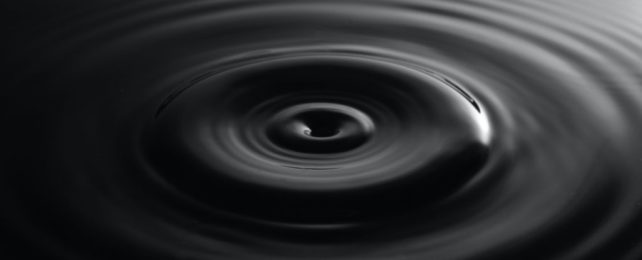The propagation of gravitational waves through matter could reveal the ripples in space-time generated by the Big Bang.
Two plasma physicists used the propagation of electromagnetic waves through plasma as an analogue for gravitational waves, devising a set of equations that describe what to look for as gravitational waves travel through stars and gas in the depths of space.
These signs could reveal the elusive gravitational waves that travel through space beyond our narrow ability to detect them – the giant, low-frequency waves generated by colliding supermassive black holes, the smaller buzz generated by orbiting white dwarf binaries, and the colossal ringing of the expansion of the Universe, just fractions of a second after the Big Bang.
"We can't see the early Universe directly, but maybe we can see it indirectly if we look at how gravitational waves from that time have affected matter and radiation that we can observe today," says physicist Deepen Garg of Princeton University.
Gravitational waves that undulated out from a collision between two stellar-mass black holes were first detected by humans in 2015, across a distance of 1.4 billion light-years. First predicted by Einstein, gravitational waves are kind of like ripples in a pond: space-time itself stretching and contracting from the gravitational disruption caused by a massive event.
The instrument that detected these waves, therefore, wasn't a telescope, but a precision array of lasers and mirrors that reacts to the warping of space-time, producing a pattern that scientists can decipher to determine characteristics of the gravitational waves' source. But the technology is limited: currently, we are only able to detect gravitational waves in the stellar mass- black hole and neutron star collision regime.
Other sources of gravitational waves are multitudinous, but currently – and possibly only just – out of reach. But Garg and his colleague, physicist Ilya Dodin of the Princeton Plasma Physics Laboratory, realized in the course of their plasma fusion research that there might be another way of seeing these currently hidden waves.
Plasma fusion could one day be an alternative and clean source of energy for powering the world, but it has a long way to go. One thing scientists need is a detailed model describing the way electromagnetic waves travel through plasma. And it turns out that it should be extremely similar to the way gravitational waves move through matter.
"We basically put plasma wave machinery to work on a gravitational wave problem," Garg explains.
According to the pair's work, the propagation of gravitational waves through matter should produce a detectable signal – changes, for instance, in the light produced by stars, or vast clouds of gas in the spaces between the stars.
This could not only reveal gravitational waves that are currently beyond our detection capabilities, but give scientists a new tool for studying the stars, too. For instance, the characteristics of the light signal generated by the gravitational waves in stars could change based on the internal structure and density of the star.
Since the interior shenanigans of stars are pretty difficult to see, gravitational waves could be a powerful new tool in the kit for this field of astronomy. The team's work could also prove useful in the gravitational wave events we can detect: the mergers of stellar mass black holes and neutron stars.
In other words, the pair seems to have identified what could prove to be a multifunctional and indispensable new way to understand the cosmos. The next step, they say, will be using it to try and analyze some actual data.
"I thought this would be a small, six-month project for a graduate student that would involve solving something simple," Dodin says. "But once we started digging deeper into the topic, we realized that very little was understood about the problem and we could do some very basic theory work here."
The research has been published in the Journal of Cosmology and Astroparticle Physics.
